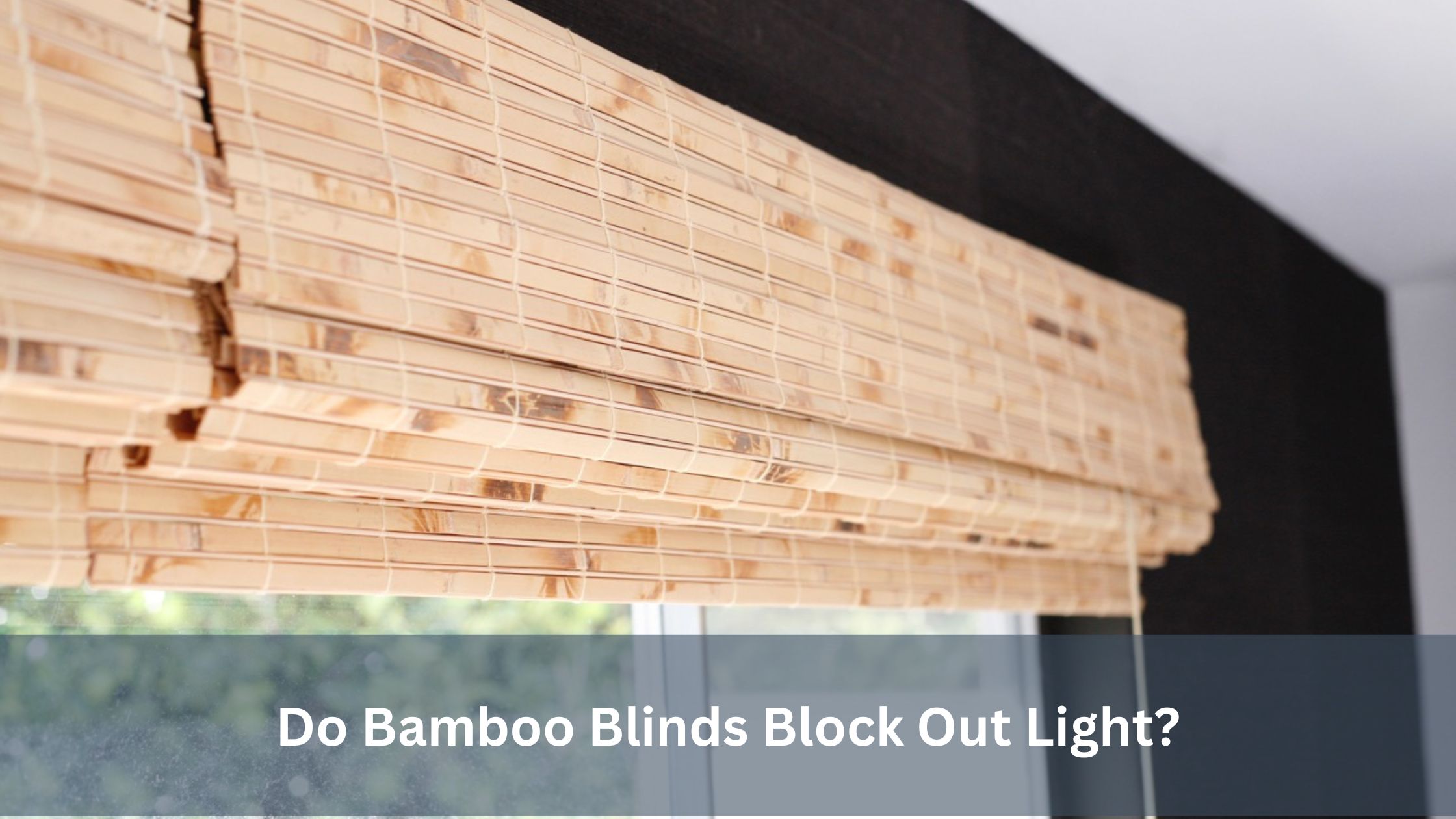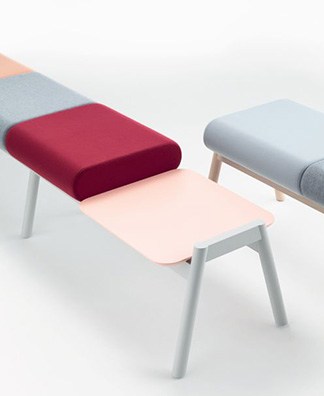Bamboo blinds are an increasingly popular choice for window treatments, offering a natural, stylish look and eco-friendly benefits.
But do they effectively block out light? Understanding how bamboo blinds filter light and the options available can help you decide if they fit your home.
Explore the various types of bamboo blinds, their light-filtering capabilities, and their benefits to make an informed choice.
Do Bamboo Blinds Block Out Light?
Bamboo blinds can block out light to a certain extent, but their effectiveness varies. While they provide some privacy and shade, their natural weave generally allows some light to filter through. Consider layering bamboo blinds with a blackout curtain or choosing a denser weave for complete light blockage.
How Do Bamboo Blinds Work?
Bamboo blinds are a stylish and highly functional addition to your home. They are crafted from natural bamboo reeds, slats, or woven materials, offering durability and a unique aesthetic. The way bamboo blinds work primarily depends on their construction and design.
Bamboo blinds can be roll-up or Roman-style. In roll-up bamboo blinds, the bamboo slats are connected by a series of cords, allowing the blinds to be rolled up from the bottom when the cords are pulled. On the other hand, Roman-style bamboo blinds fold into neat horizontal pleats when raised.
Both types provide easy adjustment for controlling light and privacy. The natural gaps between the bamboo slats allow light to filter through, creating a warm, diffused glow in the room. However, these gaps mean that more than bamboo blinds are needed to offer complete blackout capabilities. Many homeowners add liners to their bamboo blinds for enhanced light control and privacy. Depending on your specific needs, these liners can be light-filtering or blackout.
Light Filtering Capabilities
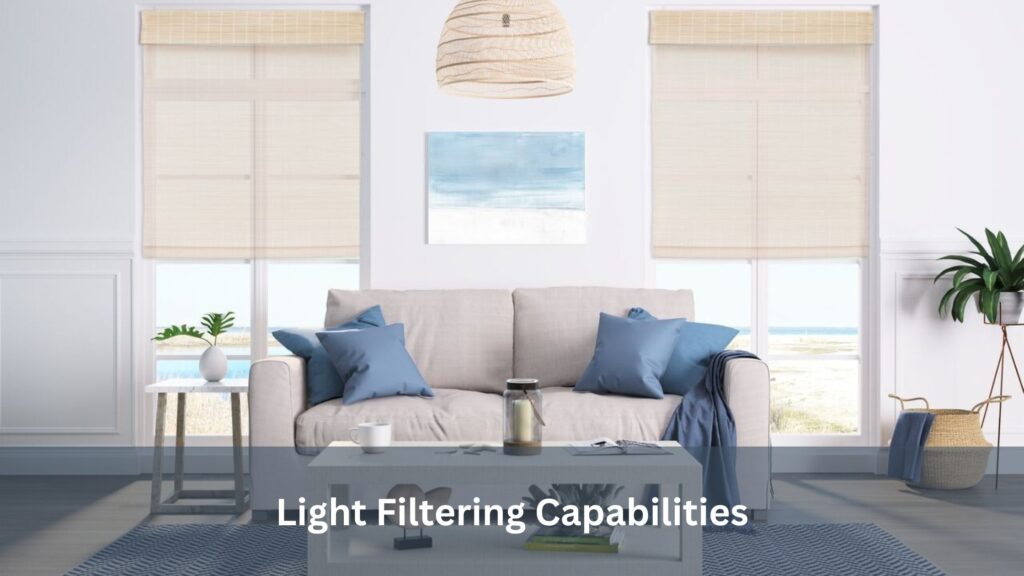
Bamboo blinds are renowned for their natural light-filtering capabilities, making them ideal for creating a warm and inviting atmosphere in any room. The inherent design of bamboo blinds allows light to seep through the gaps between the slats or woven material, resulting in a soft, diffused glow that brightens up your space without the harshness of direct sunlight.
However, the degree of light filtration can vary depending on the bamboo weave’s density and the slats’ thickness. Thicker slats and tighter weaves will naturally block more light, offering better control over the brightness in your room.
Bamboo blinds can be paired with liners for those seeking additional light control. Light-filtering liners can help manage the sunlight entering while maintaining a pleasant ambience. On the other hand, blackout liners provide maximum light blockage for those needing complete darkness, such as in bedrooms or media rooms.
Furthermore, bamboo blinds can be easily adjusted to regulate the amount of light and privacy. By raising or lowering the blinds, you can control the sunlight entering your room, making them versatile for different times of the day. Overall, bamboo blinds provide a balanced solution for light management, combining functionality with aesthetic appeal.
Benefits of Bamboo Blinds
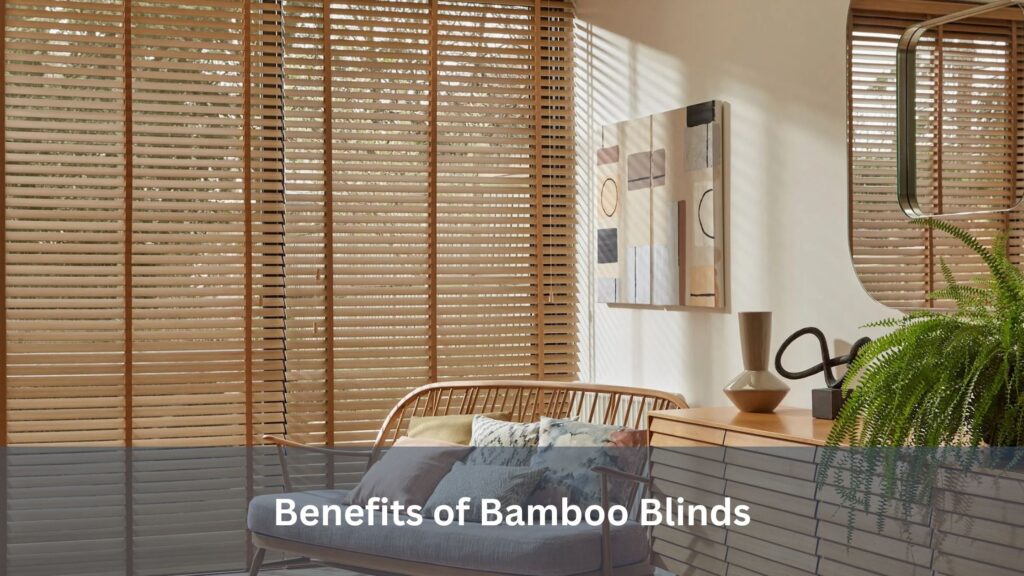
Bamboo blinds offer numerous benefits, making them popular for homeowners looking to enhance their living spaces. Firstly, bamboo blinds are eco-friendly. Made from renewable resources, they have a smaller environmental footprint than synthetic materials, making them a sustainable option for the environmentally conscious.
In addition to their environmental benefits, bamboo blinds are aesthetically pleasing. They add a natural, rustic charm to any room, complementing various modern and traditional interior design styles. The natural variations in colour and texture of bamboo give each blind a unique appearance, adding character and warmth to your home.
Bamboo blinds are also highly durable. The material is strong and resilient, capable of withstanding daily wear and tear. This durability ensures that bamboo blinds maintain their appearance and functionality over time, providing long-lasting value.
Another significant benefit is their versatility in light control. Bamboo blinds can filter light effectively, creating a soft, diffused glow. Those needing more control can be paired with liners to enhance privacy and block out light.
Furthermore, bamboo blinds are relatively easy to maintain. They require minimal cleaning, usually just a regular dusting or a wipe with a damp cloth, to keep them looking their best.
Types of Bamboo Blinds
Bamboo blinds come in various types, each with unique mechanisms and features. Understanding how each type works can help you choose the best option.
1. Roller Bamboo Blinds
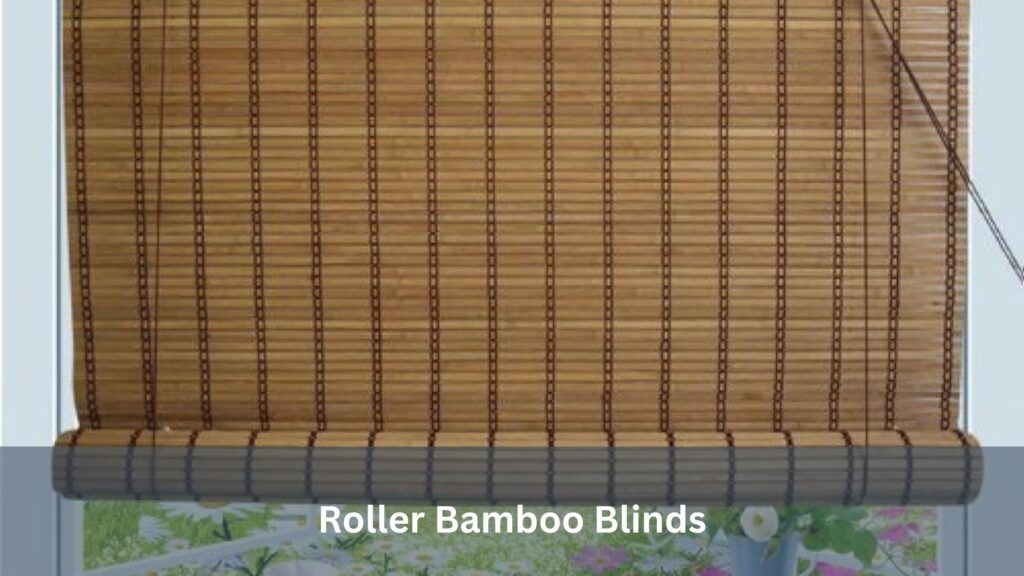
Roller bamboo blinds consist of bamboo slats attached to a fabric backing. Pulling the cord, the blinds roll up around a top-mounted tube. When rolled up, these blinds are easy to operate and space-saving, providing a sleek, modern look. However, they may allow light to seep through and have limited insulation properties.
| Pros | Cons |
| Easy to operate | May allow some light to seep through |
| Space-saving when rolled up | Limited insulation properties |
| It provides a sleek, modern look. |
2. Roman Bamboo Blinds
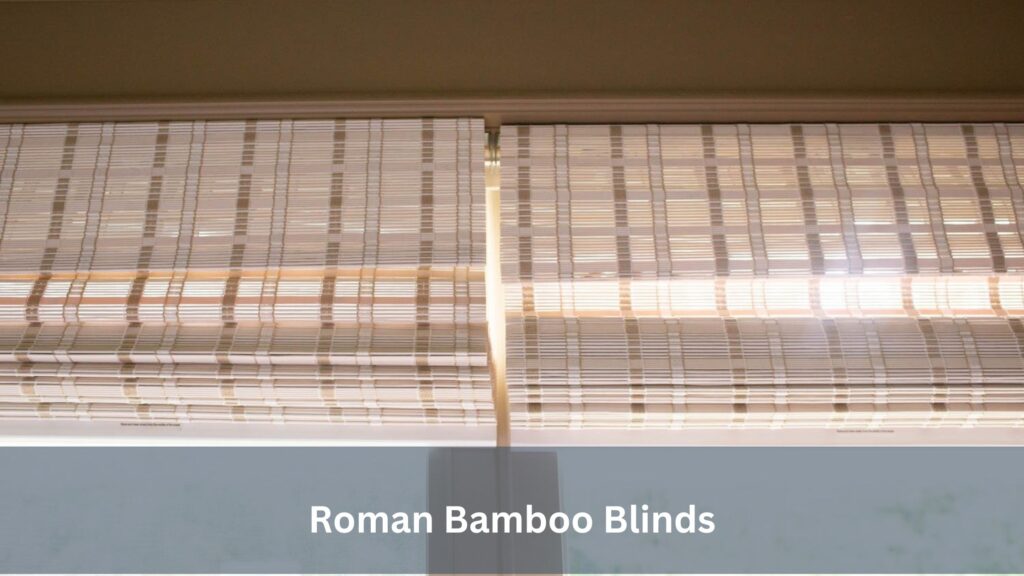
Roman bamboo blinds fold into neat horizontal pleats when raised, thanks to a series of cords and rings attached to the back. This blind offers an elegant, timeless design and is effective for light control. Additionally, they can be lined for extra privacy and light blocking. On the downside, the more complex mechanism can be harder to clean, and they can be bulkier when raised.
| Pros | Cons |
| Elegant and sophisticated design | Bulkier when fully raised |
| Reasonable light control and privacy | Requires more maintenance to keep clean |
| It can be lined for enhanced light-blocking |
3. Panel Track Bamboo Blinds
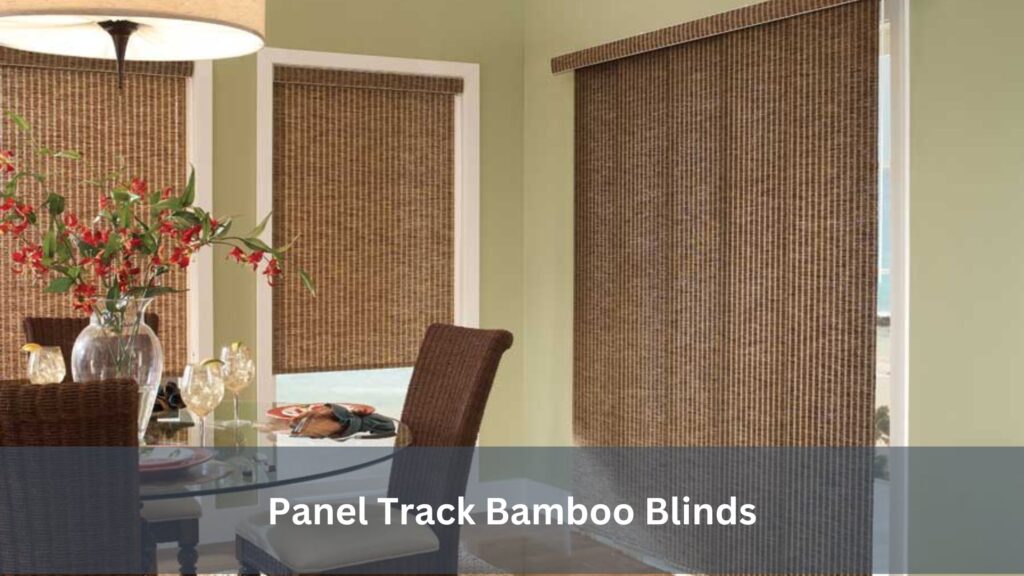
Panel track bamboo blinds feature wide panels that slide along a track, making them ideal for large windows or patio doors. They are perfect for large openings and provide a smooth sliding operation, offering a modern and stylish appearance. However, they require more space for installation, and the panels may overlap, which can reduce light control.
| Pros | Cons |
| Perfect for large openings | Requires more space for installation |
| Smooth sliding operation | Panels may overlap, reducing light control |
| Modern and stylish |
Comparing Bamboo Blinds to Other Blinds
Comparing bamboo blinds to other types can help you understand their unique qualities and decide which option best suits your needs. Here’s a detailed comparison in table form:
| Aspect | Bamboo Blinds | Wood Blinds | Fabric Blinds | Aluminum Blinds |
| Material | Natural bamboo, eco-friendly | Wood, natural and warm | Fabric, soft and textured | Aluminium, sleek and modern |
| Aesthetic Appeal | Natural, rustic charm | Classic, traditional | Soft, elegant | Modern, minimalist |
| Light Control | Good light filtering capabilities | Good light control | Varies (can range from sheer to blackout) | Excellent light control |
| Durability | Generally durable | Durable | Depends on fabric quality | Very durable |
| Insulation | Provides some insulation | Provides insulation | Depends on fabric type | Good insulation |
| Maintenance | Easy to clean with regular dusting | Requires occasional polishing | It may require vacuuming or professional cleaning | Easy to clean, resistant to dust and moisture |
| Price Range | Moderate | Moderate to high | Moderate to high | Low to moderate |
| Suitable Rooms | All rooms, mainly living areas and kitchens | Living rooms, bedrooms | Bedrooms, living rooms | Offices, kitchens |
Installation and Maintenance Tips
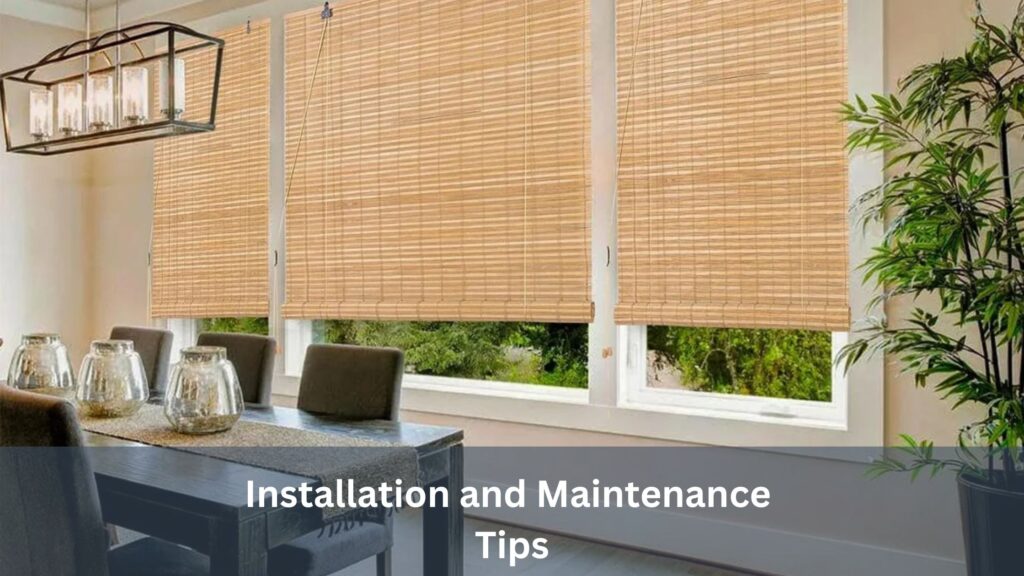
Installing and maintaining bamboo blinds properly ensures they function well and look great in your home. Here are essential tips to consider:
1. Installation
Proper installation ensures your bamboo blinds provide effective light control and enhance your room’s aesthetics. Here are some essential tips to help you install your bamboo blinds efficiently:
- Accurate Measurement: Measure the width and height of your window frame precisely. This ensures the blinds fit perfectly and function correctly.
- Bracket Placement: Decide whether you want an inside mount (within the window frame) or an outside mount (on the wall above the window). Mark the bracket positions using a pencil and level to ensure they are straight.
- Drill Pilot Holes: Drill small pilot holes at the marked positions to make it easier to insert the screws and secure the brackets.
- Attach Brackets: Screw the brackets into place, ensuring they are firmly attached.
- Fit the Blinds: Insert the bamboo blinds’ headrail into the brackets, ensuring it clicks securely. If your blinds have a valance, attach it according to the manufacturer’s instructions.
- Check Functionality: Test the blinds to ensure they operate smoothly and adjust as needed for proper alignment.
Tools and Their Uses:
Equip yourself with the right tools for installing bamboo blinds. Learn how to measure, mark, drill, and secure your way to perfect light control and stylish décor.
| Tool | Use |
| Measuring Tape | For accurately measuring window dimensions |
| Pencil | For marking bracket positions |
| Level | To ensure bracket positions are straight |
| Drill | For drilling pilot holes |
| Screws | To secure the brackets |
| Brackets | To hold the blinds in place |
Advantages and Disadvantages:
Discover the advantages and disadvantages of bamboo blinds in controlling light and enhancing your décor, ensuring you make the right choice for your space.
| Advantages | Disadvantages |
| Easy to install with essential tools | Requires precise measurements |
| It can be a DIY project | Improper installation can affect functionality |
| Enhances window aesthetics quickly | May need professional help for complex setups |
| Customisable to fit various window sizes |
2. Maintenance
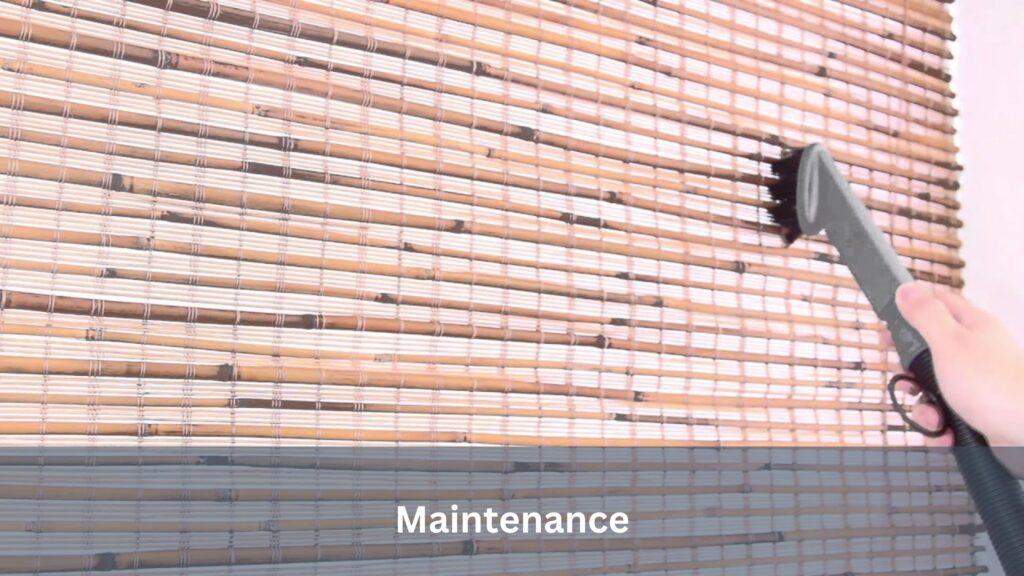
Proper maintenance of bamboo blinds is essential to ensure their longevity and effectiveness in blocking out light. Here are some detailed steps to keep your bamboo blinds in excellent condition:
- Regular Dusting: Use a feather duster or a soft cloth to remove dust from the blinds. Regular dusting prevents dirt buildup and maintains the blinds’ appearance.
- Deep Cleaning: Occasionally, deep clean your bamboo blinds by wiping them down with a damp cloth. Avoid using excessive water, as bamboo can warp or get damaged. A mild soap solution can be used for stubborn stains.
- Spot Cleaning: Use a soft cloth dipped in a mild detergent solution for specific spots or stains. Gently rub the area and wipe it with a clean, damp cloth to remove any soap residue.
- Avoid Harsh Chemicals: Do not use abrasive cleaners or harsh chemicals, as these can damage the bamboo’s finish and structure.
- Check Mechanisms: Regularly inspect the operating mechanisms, such as cords and pulleys, to ensure they function smoothly. Lubricate them if necessary to keep them in good working order.
- Protect from Moisture: Bamboo blinds should be kept from high humidity and direct water exposure to prevent warping and mould growth.
Tools and Their Uses:
| Tool | Use |
| Feather Duster | For regular dusting and removing loose dust |
| Soft Cloth | For wiping down and spot-cleaning |
| Mild Soap Solution | For deep cleaning and removing stubborn stains |
| Lubricant | To ensure the smooth operation of mechanisms. |
Advantages and Disadvantages:
| Advantages | Disadvantages |
| Easy to maintain with essential tools | Requires regular cleaning to prevent buildup |
| Enhances longevity | It can be damaged by excessive moisture. |
| Keeps blinds looking new | Harsh chemicals can damage the finish |
Conclusion
While bamboo blinds filter natural light and create a warm ambience, they are not designed for complete blackout.
Their eco-friendly materials and aesthetic appeal make them popular for homeowners seeking a balance of light control and natural charm by understanding their light-filtering capabilities and considering optional liners for enhanced privacy.

